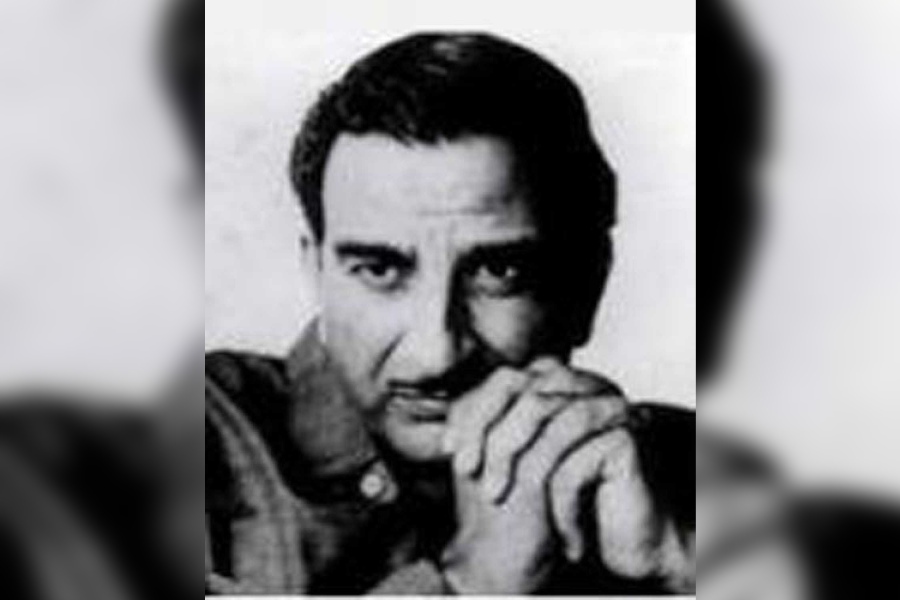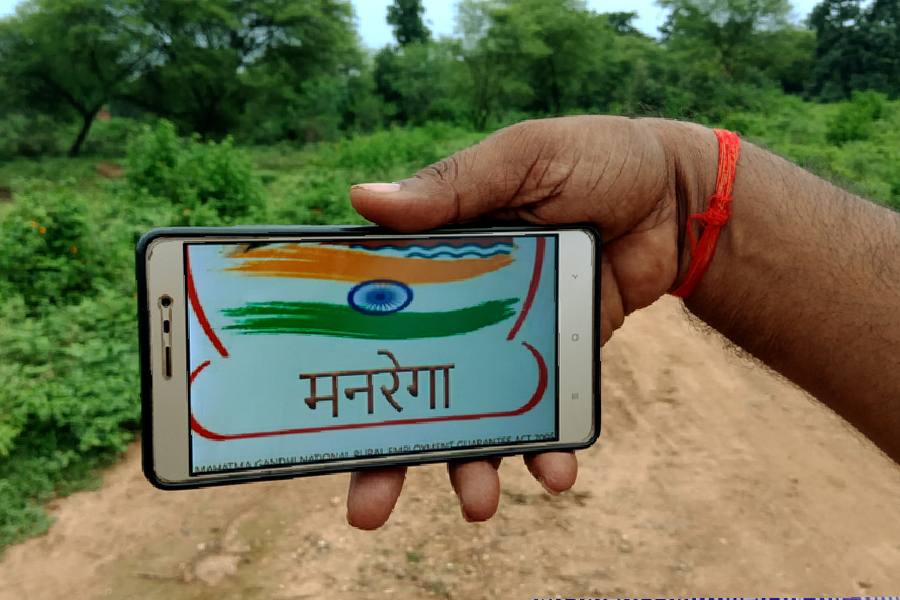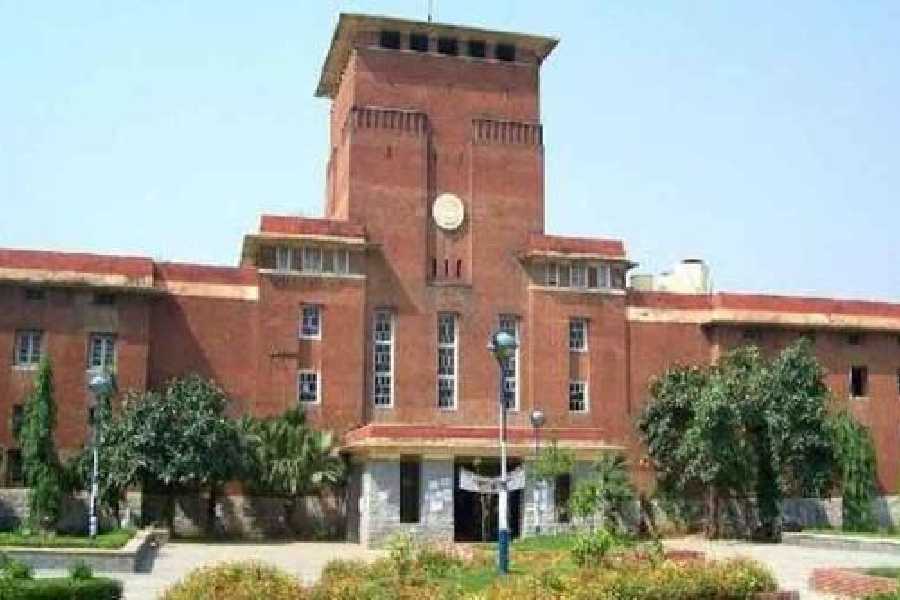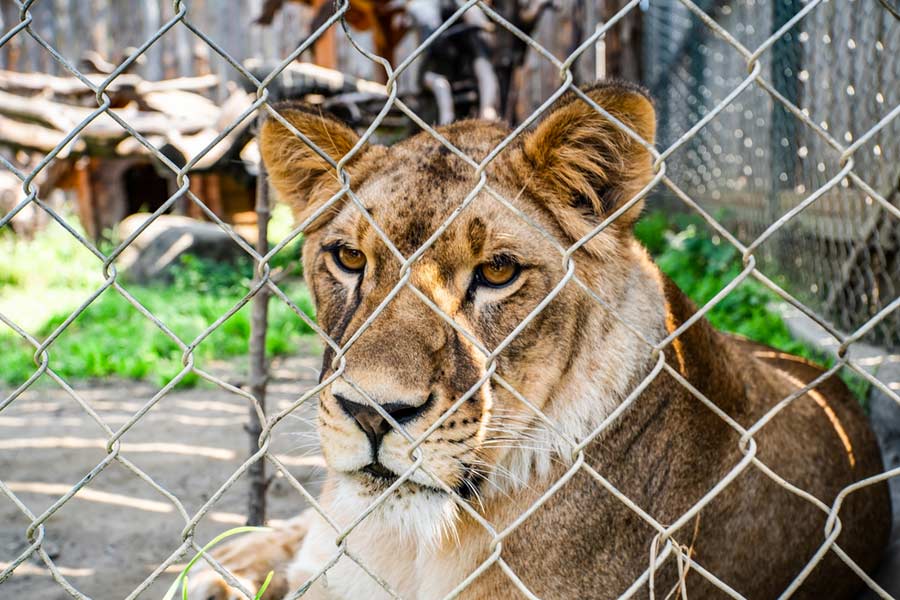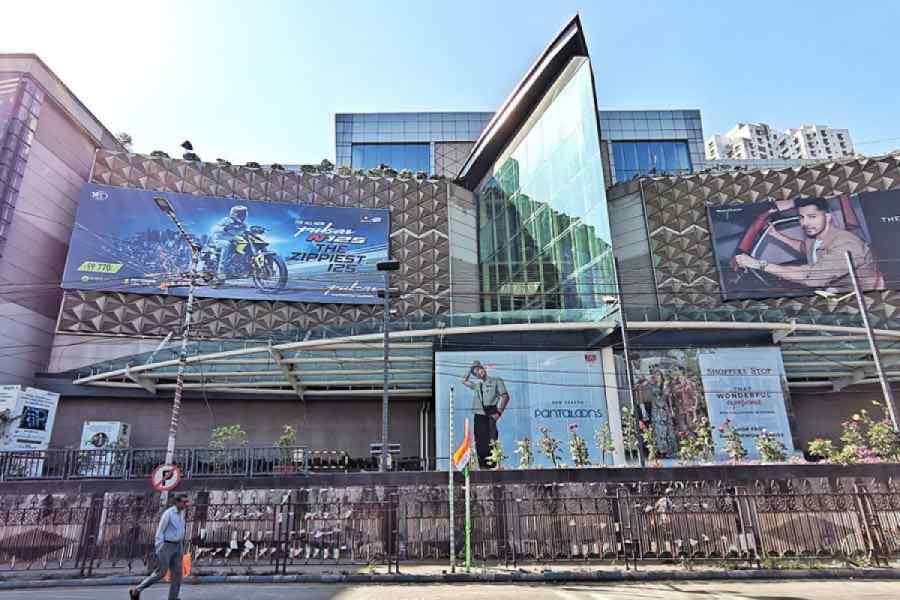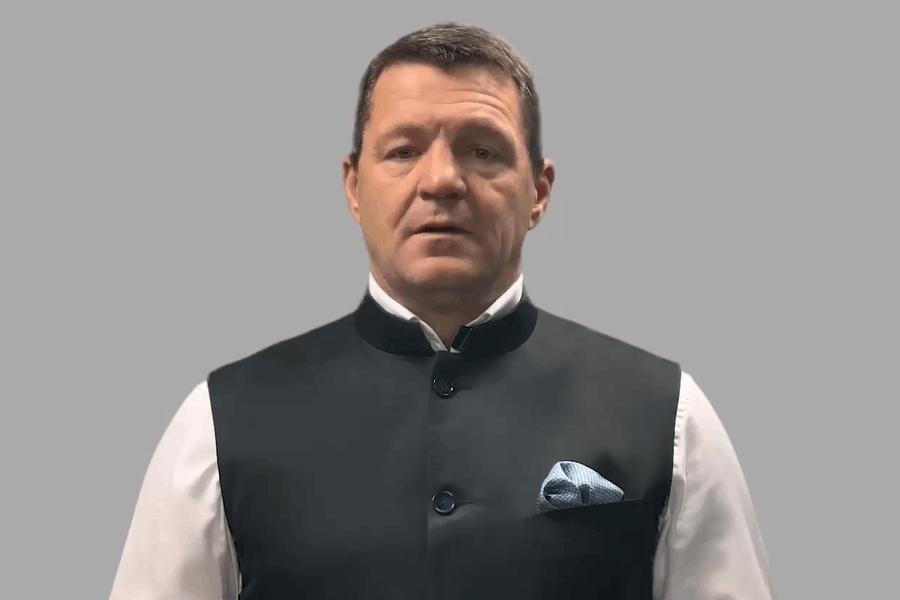His first stint in cinema came as a stunt double for a heroine, Waheeda Rehman made her Hindi debut in his film, he wanted to be singer instead went on to become the master of the crime-suspense genre with gems such as "CID" and "Woh Kaun Thi?".
Raj Khosla, the director with unlikely beginnings, would have been 100 on May 31. He had a limited oeuvre of just over 25 films in 34 years but most stand out in the crowded gallery of Indian movies for their watchability, their star power and perhaps most of all for the many songs heard and remixed even today.
With his centenary - which will be celebrated in Mumbai with a one-day retrospective of his restored films - cinephiles reopen a chapter of Indian cinema history that may not have got the prominence it deserved.
Beginning his movie making career with “Milaap” in 1955 and ending with “Naqaab” in 1989, both fairly forgettable, Khosla directed a host of major hits in between. He gave Sadhana three of her best films in "Woh Kaun Thi?", "Mera Saaya" and "Anita", worked with Dev Anand in memorable classics, including “Kala Paani” and “Solva Saal”, and was mentored by Guru Dutt.
With his second film “CID”, a stylish crime drama, Khosla sealed his place as a hit director still remembered. The 1956 film, which also starred Dev Anand and Shakila and introduced Waheeda Rehman, was offered to him by Guru Dutt.
Khosla, the director who carefully balanced art and commerce in his movies, has also given Hindi cinema some of its most memorable songs -- "Lag Jaa Gale", "Mera Saaya", "Jhumka Gira Re", "Kahin Pe Nigaahen Kahin Pe Nishaana", "Yeh Hai Bombay Meri Jaan", "Nazar Lagi Raja Torey Bangley Per" and "Hai Apna Dil To Awara" and so many more.
In fact, “Jhumka Gira Re” from “Mera Saaya” has been repurposed in Karan Johar’s 2023 film “Rocky Aur Rani Ki Prem Kahani”.
Born on May 31, 1925, in Rahon in undivided Punjab, Khosla's parents moved to Mumbai when he was just three. Khosla attended Anjuman-I-Islam school. He completed his college from Elphinstone College, where he became interested in theatre. Khosla trained in Hindustani classical music from a young age and hoped to make a career in music after graduation but life had other plans.
He was a fan of legendary singer Kundan Lal Saigal and they sometimes did their 'riyaaz' together.
"At my ancestral house in Matunga, just down the road, Mr K L Saigal used to stay, and every day in the morning, dad used to go to his place and do riyaaz. He would listen to him sing as well. He used to practice with him also. This was an everyday ritual,” Khosla’s daughter Sunita Bhalla told PTI.
"Later, KL Saigal sahab told dad, ‘Why don't you go and sing on the radio or in movies'. So, he got two-three opportunities to sing in films and he sang as well. This was before he made his debut as a director with 'Milap'," she recalled.
According to “Raj Khosla: The Authorized Biography” by Amborish Roychoudhury, Khosla worked briefly at a bank after college but quit the job after just three months. His first stint in cinema came as a stunt double for a heroine. He had to ride a horse. Khosla was paid Rs 75 for this adventure.
He would eventually make his acting debut with a film called "Raen Basera" where he also got to sing for one of the songs. But the movie did not do well and Khosla continued to search for playback opportunities. He got his second song for “Bhool Bhulaiyan”, the book says.
The singing career was shortlived. It was his friendship with Dev Anand, a rising star at the time and the actor of many of Khosla's hits later, which changed the course of his life.
Dev Anand offered Khosla a chance to work as an assistant director with Guru Dutt on "Baazi" and promised that he would get a chance to sing as well. And life took a turn.
The book has Khosla telling Nasreen Munni Kabir in an interview, "I met Guru Dutt and he asked me, ‘Have you any experience in assisting?’ I said, ‘Yes, I have.’ Tommy-rot, I knew nothing about film-making. The second thing he asked, ‘Do you know Hindi?’ I replied, ‘Of course I know Hindi.’ Guru Dutt said, ‘Okay, start from tomorrow'." “I couldn’t actually write in Hindi. I’m from Punjab, Gurdaspur, so I knew Urdu. In those days, in the Punjab learning Urdu was very common; even now you will find that many Punjabis who are over forty know how to write Urdu, not Hindi,” he is quoted as saying.
The first thing Khosla did after the meeting was to buy a book on the Hindi alphabets and learn the letters from scratch, the biography goes on to say.
Khosla assisted Guru Dutt on "Jaal" (1952) and "Aar Paar" (1954). In fact, his directorial debut "Milap" starred his friend Dev Anand and Geeta Bali, who was married to Guru Dutt.
The very next year came "CID", which propelled him to the big league. After that came back to back hits in "Kala Pani", "Solva Saal", both in 1958, and "Bombai Ka Babu", all with Dev Anand.
In 1964, he directed "Woh Kaun Thi?", a ghostly tale starring Sadhana, Manoj Kumar and Prem Chopra. The movie set the standard for Bollywood suspense and established Khosla’s flair for moody psychological dramas. Sadhana’s dual performance as the twin sisters and Madan Mohan’s haunting music, including the still-popular track “Lag Jaa Gale” sung by Lata Mangeshkar.
In 1966's "Mera Saaya" was another gem from Khosla in the thriller space that once again featured Sadhana in a dual role. The film cemented his reputation as a filmmaker who could blend suspense with emotion.
As a filmmaker, Khosla placed women at the centre of his story, something that was not the norm at the time as screens were ruled by male stars. Later on in his career came "Mera Gaon Mera Desh", "Main Tulsi Tere Aangan Ki" and "Dostana". "Sunny" in 1984, starring Dharmendra, was his last major success.
In the foreword for "Raj Khosla: The Authorized Biography", his protege Mahesh Bhatt narrates the story of his first meeting with the director. Bhatt, who went on to have a successful career of his own in Hindi cinema, was all of 20 when he met Khosla in Mehboob Studios in 1969.
The director, who had emerged from one of his afternoon siestas, asked Bhatt, 'Do you know anything about filmmaking?' When Bhatt said, 'No, Sir'. Khosla grinned and said, 'Ah, zero is a great place to start".
Who better than Khosla to know that.
Khosla died in 1991, an aspiring singer who went on to establish a remarkable career as director. PTI RB BK MIN MIN MIN
Except for the headline, this story has not been edited by The Telegraph Online staff and has been published from a syndicated feed.

